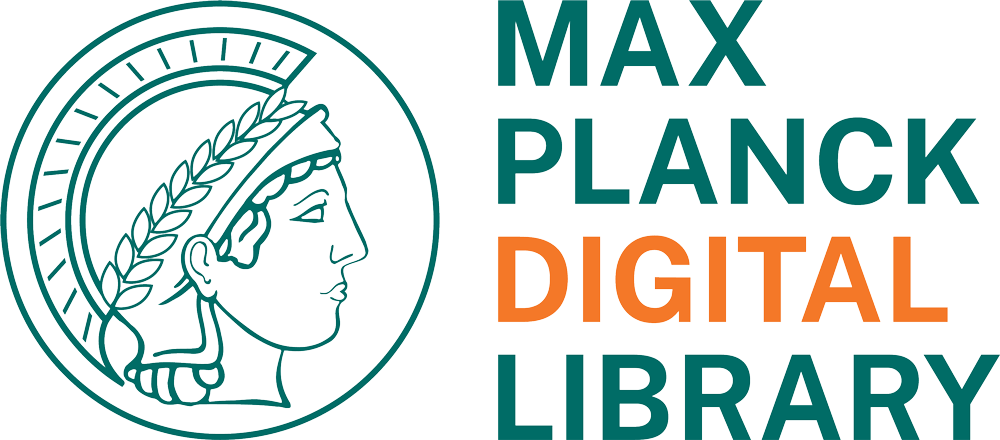
The Max Planck Digital Library uses Mattermost to accelerate research workflows, maintain data sovereignty & ensure compliance
“Using Mattermost is completely voluntarily. We have 5,000 users today, and we’re just getting started.”Matías Hernández User Support Specialist at Max Planck Digital Library

The Max Planck Digital Library (MPDL) — a central institution of the Max Planck Society, one of the world’s premier research institutions — ensures that the more than 25,000 scientists, postdoctoral researchers, and Ph.D. students have the tools they need to accelerate their work.
Headquartered in Germany, the society is a collection of more than 80 institutes spread across the country, each focusing on a different field of study — like high particle physics, biology, solid-state chemistry, and international law. Over the years, researchers from the Max Planck Society have collectively earned 31 Nobel prizes.
Continuing to move research forward while rapidly transitioning to remote work
The first encounter with Mattermost happened in 2019 when MPDL began hearing from researchers that a communication platform with an emphasis on collaboration was badly needed. During those early days, Mattermost was more like a pet experimental project where the MPDL team was trying to get a feel for the real demand for such a platform.
When COVID-19 appeared in early 2020, many Max Planck facilities shut down to limit the spread of the virus and keep researchers and scientists safe. All of a sudden, having a tool like Mattermost became a top priority across the Max Planck Society and led to the rapid growth of the platform.
“Everyone had to work remotely,” says Matías Hernández, in charge of user support for Mattermost at MPDL. “This was a huge change for everyone and created new problems. How do we stay in contact remotely? How can we keep track of conversations? How can we work as a team?”
At the time, many researchers and scientists were still primarily relying on email and in-person conversations to collaborate; others were using commercial tools such as Slack. To keep research moving forward across a distributed team, MPDL knew they needed to expand the offering of a modern collaboration solution that would enable scientists and students to stay connected while everyone was working from home.
From data protection to national security: The power of secure collaboration in research
As the MPDL team began searching for a collaboration platform to focus on, they zeroed in on their requirements.
“Our number-one requirement was that it was compliant and compatible with Germany’s strict privacy laws,” Hernández says, adding that they knew an open source solution would be best for their unique situation. “We tend to favor solutions that are open source because of transparency, customization, and the fact that there’s a vibrant open source community behind them.”
After evaluating different solutions, the team ultimately decided that “Mattermost was the clear winner” due to its user-friendliness, ease of implementation, empowered teamwork capabilities, advanced security and compliance features, and the fact they could host it on infrastructure they controlled.
“It was very important that we would be able to install Mattermost on our own servers to adhere to Germany’s privacy laws,” Hernández explains. “If researchers upload documents that can be sensitive for work purposes, those documents need to be stored on servers in Europe. Being able to deploy Mattermost on our own servers was a big selling point because it allows us to have more control over where our data is stored. If we used a proprietary solution, data would go on commercial servers we don’t control. There’s a trust issue there.”
Rolling out Mattermost across the entire Max Planck ecosystem
Over the last 15 years, Hernández has worn many different hats at Max Planck. After starting as a Ph.D. student researcher, Hernández rose through the ranks, ultimately becoming a group leader in charge of a team of students.
“When I was a group leader, everything was written down by hand the same way it was done for decades,” Hernández says. “I was an early adopter of electronic lab journals and forced my students to start recording experiments digitally.”
Since people often stick to what they know and what’s familiar, not every student was eager to change their approach. But Hernández kept pushing and pushing — and that persistence paid off.
“After two years, a student came to me and said, ‘I would never be able to go back to pen and paper,’” he explains.
Fast-forward to today and Hernández has moved from the research side of the organization to the research management side — an experience that’s given him a unique perspective. Just as he encouraged students to digitize their research workflows, he sees a similar need for teams to take a more modern approach to research and embrace Mattermost.
However, while the MPDL is tasked with ensuring scientists and students have the tools they need to do their best work, none of those tools are mandatory.
“We don’t have this top-down hierarchy of telling people, ‘You need to use this,’” Hernández continues. “Using Mattermost is completely voluntary. It’s a tool we provide researchers and they decide among themselves whether to adopt it or not.”
In other words, research teams are given a choice. Many of them are opting to use Mattermost.
“There’s been a very, very fast rate of adoption, with an organic growth rate of 3% per month, which is basically exponential growth,” Hernández says. “This growth is occurring because people are telling each other to use Mattermost, and I’m pretty happy with that. We have 5,000 users today, and we’re just getting started. Some workflows are heavily based on Mattermost.”
Some researchers have been slower to adopt new technologies because they prefer the old-school, pen-and-paper approach. Others still use email despite its headaches. Looking ahead, Hernández has his sights set on getting Mattermost in the hands of every researcher at Max Planck so that it becomes even easier to communicate across institutes.
“Mattermost is one of the main communication platforms in the Max Planck Society, but there’s a lot more room to grow,” he says, adding that a lot of users don’t even know Mattermost is available due to Max Planck’s decentralized nature.
Even so, Hernández is confident that his organization made the right choice in trusting Mattermost to power their collaborative workflows.
Supporting remote collaboration
Though scientists and students have returned to Max Planck’s facilities, many researchers are still working remotely. With Mattermost serving as a secure collaboration hub, the platform enables distributed teams to move groundbreaking research forward with speed.
“More than half of our team is still working remotely, so Mattermost is essential to ensure we can interact fluidly,” Hernández explains.
According to Hernández, group leaders often create dedicated channels to manage their teams and keep everyone in sync. “I’ve met group leaders who completely depend on Mattermost,” he says. “It has really changed their workflows and enables them to keep track of everyone and be able to communicate with people remotely.”
Additionally, Mattermost helps facilitate collaborative research projects that involve several different departments and partner institutions.
Minimizing email and powering dynamic interactions
Before Mattermost, a considerable proportion of most collaboration was done via email — which “quickly becomes a hassle,” says Hernández, who’s worked as a researcher at three different Max Planck institutes. “If you work in a biology or chemistry lab, it’s very common for someone to be looking for a specific reagent. Back in the day, I remember getting bombarded with four or five emails every day: Does anyone have 50 milligrams of this reagent? It’s not a very efficient way of doing that. It was always frustrating for me.”
We all know what it’s like to be involved in a dreaded never-ending email chain. “When you’re exchanging emails back and forth, it can get really ridiculous,” Hernández explains. “You reach a limit very quickly and it starts to become annoying.”
Thanks to Mattermost, those email chains are a thing of the past. The platform has turned into a “virtual meeting point” that supports more dynamic, fluid, and casual interactions — all of which are recorded in one place, which helps researchers save time they’d otherwise spend digging through emails looking for information.
“I wish I had something like Mattermost when I was a researcher,” he continues. “It’s very hard to go back to email once you start using Mattermost. It definitely saves a lot of time and frustration. You save about 30% of the time you’d spend trying to figure out where things are, and that time can be allocated to doing something that is actually advancing the project.”
Providing context-rich collaboration, seamless knowledge transfer & uninterrupted workloads when teams and environments change
In the past, academics and scientists tended to stay put in one place for their entire careers. That’s no longer the case; there’s a lot of turnover today.
“Researchers are moving all the time trying to advance their careers,” Hernández says. “This creates a big problem in figuring out how to retain knowledge. A very common problem today is that people leave and they have a very valuable understanding of a certain subject or a protocol on how to conduct an experiment, and there’s no digital record of that. Mattermost is perfect for that because it allows us to keep a record of long-term interactions between researchers and that serves as a repository, which is very, very valuable.”
Recently, a group leader was leaving Max Planck for a professorship. Because he worked inside Mattermost, it was easy for Hernández to give him a copy of his data to take with him.
“Mattermost acts as a central documentation center for the countless interactions, conversations, and knowledge — the informal know-how,” Hernández says. “Not only can we record all of this, we can also export it. That didn’t exist before.”
In other words, Mattermost gives Max Planck researchers a permanent record of context-rich collaboration, which facilitates seamless knowledge transfer and uninterrupted workflows should teams or environments change at any point in time. This helps ensure projects keep moving forward in all kinds of environments — including those where change is infrequent (e.g., a tenured professor and research team sitting on a lot of data) to those where change is rapid with high turnover, which would result in inefficient handoffs without Mattermost, slowing research down.
Since Mattermost supports data portability, conversations and work continues long after the change of guard, with virtually zero interruption to productivity.
Expanding their relationship with ‘mission-critical’ Mattermost
Collaboration platforms like Mattermost play a crucial role in research institutions by providing a secure and centralized communication hub. They safeguard research findings by ensuring that sensitive information is shared only among authorized individuals, facilitating data encryption and access control.
Additionally, these platforms support strategic planning and adaptability by enabling real-time collaboration, efficient information sharing, and streamlined decision-making processes — all while safeguarding intellectual property through secure access and version control mechanisms.
Currently, MPDL is using Mattermost Professional; MPDL has internally rebranded Mattermost with the name Minerva Messenger to highlight the customized features the team has implemented in Mattermost for its researchers (Minerva is the Roman goddess of wisdom who is represented in Max Planck’s institutional logo).
With 5,000 users, Hernández believes the organization is at an inflection point and that it’s time to upgrade to Enterprise Edition to get access to advanced features like special permissions, which would enable them to create local system admins at each institute, high availability clusters, and the ability to create custom Playbooks. Hernández believes these features will bring adoption closer to 20,000 users.
“We hope that we can make the move to the Enterprise license this year,” Hernández says. Until then, “we’re very happy with Mattermost. It’s mission-critical.”
